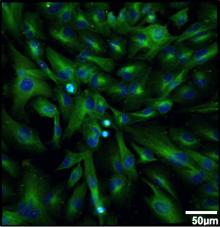
The Neurosurgical Oncology Unit aims to develop novel therapeutics for Glioblastoma (GBM)–the most common primary malignant CNS. Despite aggressive management with maximal surgical resection, radiation, and chemotherapy, median and 5-year survival rates remain low (15 months and 5.6%, respectively). Tumor-specific contributors to treatment failure include cellular and genetic heterogeneity and a highly immunosuppressive tumor microenvironment. GBMs also harbor self-renewing, tumorigenic glioma stem-like cells (GSCs) that contribute to tumor initiation, maintenance, and recurrence. The need for novel GBM therapeutic strategies is urgent.
The role of primary cilia in cancer has garnered attention over the last decade and provides opportunities for the development of novel therapeutic strategies. Primary cilia are non-motile, highly conserved microtubule-based organelles that project from the cytoplasmic membrane in a single copy from virtually all mammalian cells. The organelle is required for several key signal transduction cascades implicated in cancer. While GBM cells show aberrant ciliogenesis and downregulation of cilia-related genes, functional, mature primary cilia are present in GBM cell lines and biopsies (Figure 1).
Investigations into the functional significance of primary cilia in GBM tumorigenesis is in a nascent stage. A deeper understanding of the specific signaling cascades and mechanisms regulating ciliogenesis in GBM and their impact on proliferation, invasion, treatment resistance, and immunosuppression is critical to moving the field forward and developing a potentially new paradigm of effective, “cilia-centric” therapeutic strategies. This is the overarching aim of our group.
